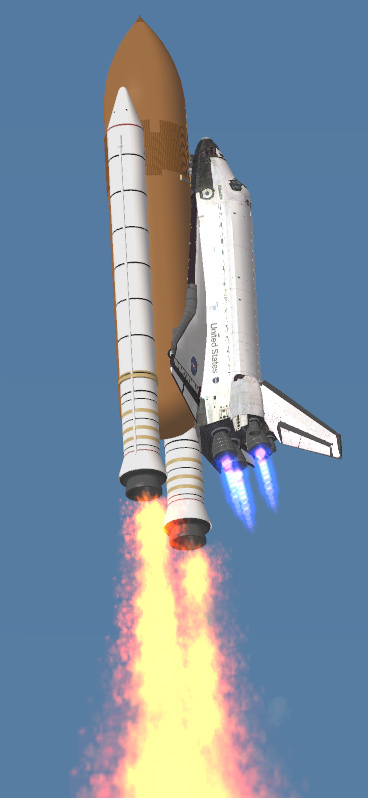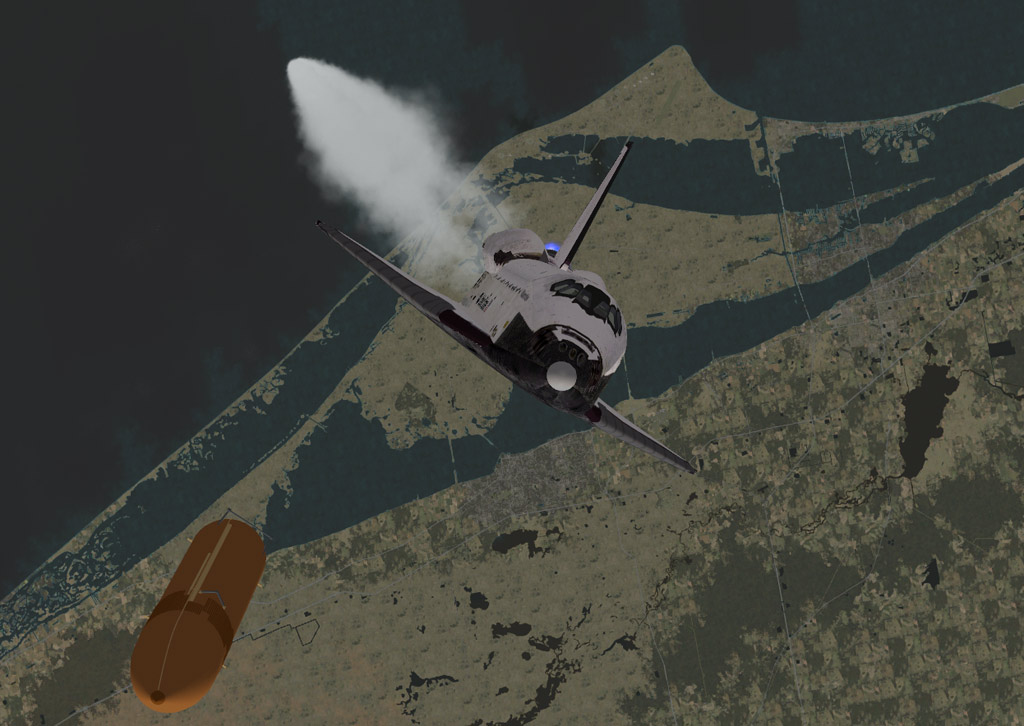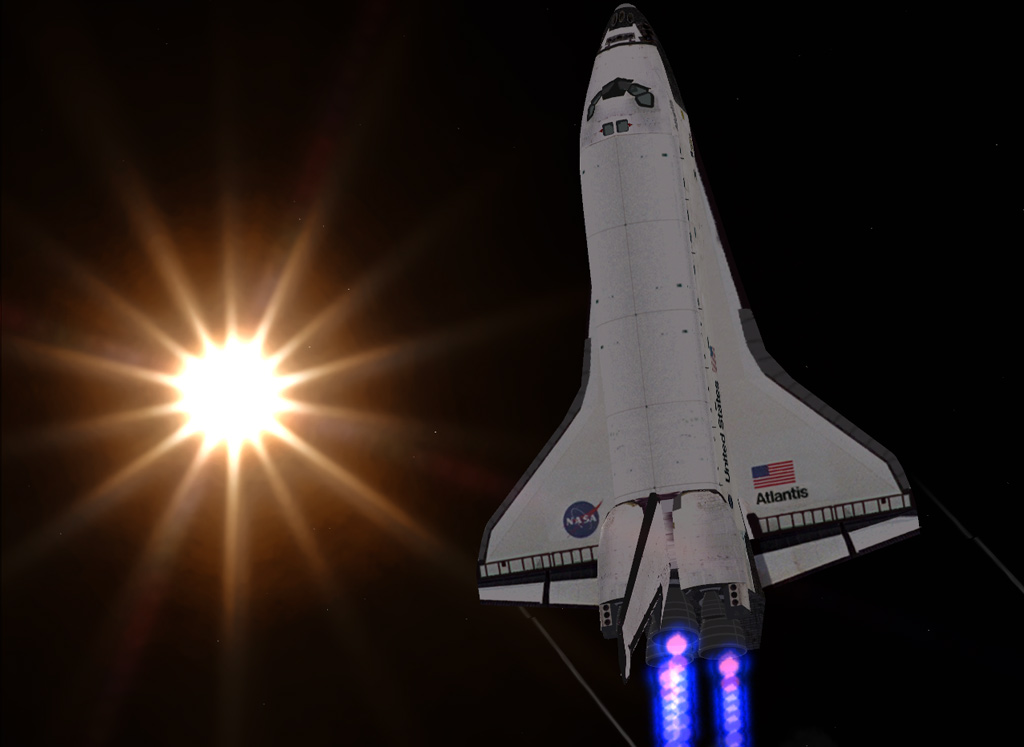The three main engines burn shortly without the big orange fuel tank for orbit insertion.
/sigh.......
Taken directly from a NASA document:
"At launch, the three space shuttle main engines-fed liquid hydrogen fuel and liquid oxygen oxidizer from the external tank-are ignited first. When it has been verified that the engines are operating at the proper thrust level, a signal is sent to ignite the solid rocket boosters. At the proper thrust-to-weight ratio, initiators (small explosives) at eight hold-down bolts on the solid rocket boosters are fired to release the space shuttle for lift-off. All this takes only a few seconds.
Maximum dynamic pressure is reached early in the ascent, nominally approximately 60 seconds after lift-off.
Approximately a minute later (two minutes into the ascent phase), the two solid rocket boosters have consumed their propellant and are jettisoned from the external tank. This is triggered by a separation signal from the orbiter.
The boosters briefly continue to ascend, while small motors fire to carry them away from the space shuttle. The boosters then turn and descend, and at a predetermined altitude, parachutes are deployed to decelerate them for a safe splashdown in the ocean. Splashdown occurs approximately 141 nautical miles (162 statute miles) from the launch site. The boosters are recovered and reused.
Meanwhile, the orbiter and external tank continue to ascend, using the thrust of the three space shuttle main engines. [glow=yellow,2,300]Approximately eight minutes after launch and just short of orbital velocity, the three space shuttle engines are shut down (main engine cutoff), and the external tank is jettisoned on command from the orbiter.[/glow]
The forward and aft reaction control system engines provide attitude (pitch, yaw and roll) and the translation of the orbiter away from the external tank at separation and return to attitude hold prior to the orbital maneuvering system thrusting maneuver.
The external tank continues on a ballistic trajectory and enters the atmosphere, where it disintegrates. Its projected impact is in the Indian Ocean (except for 57-degree inclinations) in the case of equatorial orbits (Kennedy Space Center launch) and in the extreme southern Pacific Ocean in the case of a Vandenberg Air Force Base launch.
Normally, two thrusting maneuvers using the two orbital maneuvering system engines at the aft end of the orbiter are used in a two-step thrusting sequence: to complete insertion into Earth orbit and to circularize the spacecraft's orbit. The orbital maneuvering system engines are also used on orbit for any major velocity changes."
















